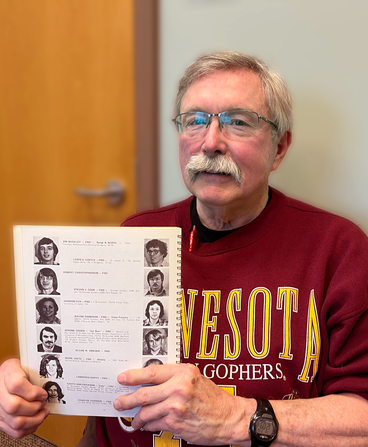
Steve Cook, like many U of M forestry alumni, feels most at home in the woods. He earned his B.S. degree in Forest Resources Development in 1975, after which he completed stints with the U.S. Forest Service both in Idaho and Montana. In 1977, he returned to Minnesota and worked as a lab assistant for Dr. David French, his former Forest Pathology Professor and a nationally recognized authority on Dutch elm and oak wilt diseases.
The next year, Cook went on to be one of two Regional Coordinators for the Federal Dutch Elm Disease Demonstration Project for the Minnesota Department of Natural Resources (DNR). At a critical time, he was responsible for implementing feasible controls of Dutch elm disease in the cities of Hutchinson, Litchfield, and Granite Falls. That experience led to him found Cook Company Incorporated in 1991, a consulting business through which he assisted public and private landowners with control of oak wilt and Dutch elm diseases, along with other critical aspects of tree management and care. He continued this work until his retirement in 2014.
Cook grew up in the Twin Cities and also largely built his career here. The Department of Forest Resources, formerly the College of Forestry, provided key support for that career, and now Cook is returning support to the next generation of foresters – and the environment – through planning a future gift to the department. Here, he shares some memories from his time at the U of M and his career, as well as touches on the impact the Forestry Department had on him.
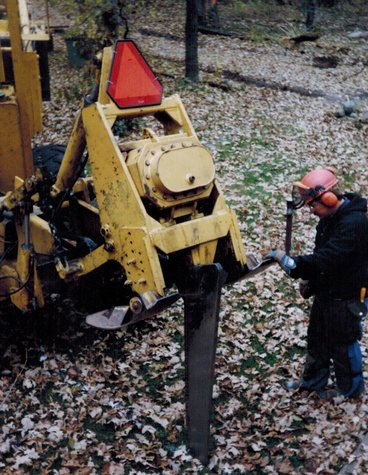
What’s a standout memory from your time at the U?
[In class,] Dr. French was talking about how Dutch elm disease was going to follow the bell-shaped curve and peak in a few years. And his forecast was correct because in ’77, it was peaking in the Twin Cities.
What was it like fighting against Dutch Elm Disease in its peak in the late 1970s?
Like every other urban forestry professional at the time, I worked really long and hard. The year before I started, one of my three cities was supposed to have had only 100 infected elms, but I figure they had probably closer to 500. Unfortunately, they had not treated it as seriously as they needed to, and over the first two or three days on the job, I found over 100 standing dead trees.
But the good news is, we started hitting the ground hard. We hired two people for tree inspection work and started marking trees. That first year, we got up to 880 trees with Dutch elm disease, but the second year our efforts paid off and disease incidence was down to 440. So our impact was immediate. We were lucky that we got there when we did because in another few years, the city would have been in a really serious position.
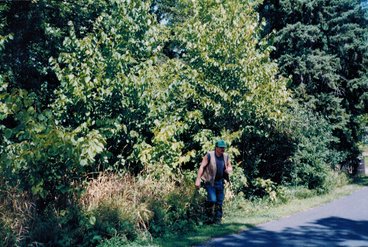
Why did you decide to include a gift in your will (also called a "future gift") for a scholarship in the Department of Forest Resources?
It was fairly simple: I don’t think I would have had the career that I had, nor the life that I’ve had, without being able to come to this college and get the education that I received.
I also wanted to make an impact on the environment because it has never been needed more. I love that [in forestry], you may be doing something that people don’t always appreciate or see – but when you get an opportunity to teach them, when they ask you a question and you have the opportunity to explain the answer, they really get it. And when people “get it,” then [caring for the environment] will carry on.
What advice do you have for current and future forestry students?
Keep asking yourself questions. Are you where you want to be? How are you going to get to where you want to be and keep focused on the positives that you can take away from your career?
I also think back to something my former professor Frank Irving once shared in class: that one of the things he got from college was understanding all that he did not know.
I think that is the kind of reward you take away from your college years that you don’t even realize you are taking. It gives you more appreciation for the science, for your education, and for the people that came before you when you realize all that you have yet to learn.
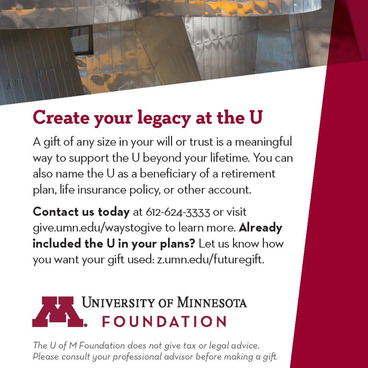
Are you interested in planning a legacy gift to the University of Minnesota Department of Forest Resources? Contact the University of Minnesota Foundation at 612-624-3333 or visit give.umn.edu/giving.
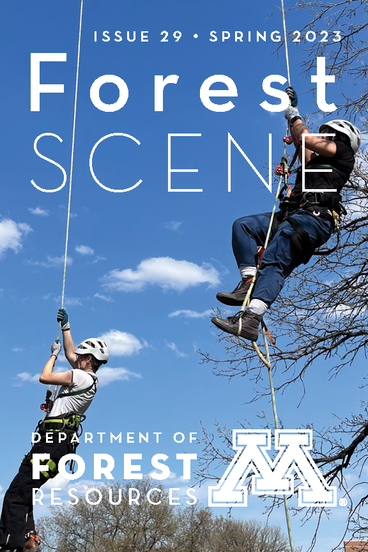
The Forest Scene newsletter is published biannually in the spring and fall, featuring stories and updates from the Department of Forest Resources. Readers can download issue 29 of Forest Scene as an interactive PDF that is fully tagged and compatible with most screen readers, or read the individual stories here in a web-based format:
- Department Message from Kristen Nelson
- Faculty Retirement: Paul Bolstad
- ESPM Student Spotlight: Kylee Gregory
- FNRM Student Spotlight: Adam Langer
- From Student to Experts: Speaking With Your Audience – Communication tips from Forest Resources Professor and Extension Specialist Charlie Blinn
- Spring Semester Highlight: The Tree Ascension Club
Image 1 description: A man with gray hair and a moustache holds a yearbook in his hands while wearing a UMN sweatshirt. Besides this photo is the text, "Alumnus Spotlight: Steve Cook, '75. Forest Scene Issue 29, Spring 2023."
Image 2 description: Steve Cook holds a copy of his 1975 college yearbook in his hands, which is turned to his senior portrait.
Image 3 description: Steve Cook stands to the right of a yellow vibratory plow cutting roots between oak trees. He's is wearing an orange hardhat and ear muffs and is looking down while the machine works.
Image 4 description: Steve Cook exits a dense grouping of trees alongside a road on a warm day. He's wearing a green baseball cap, a khaki work vest, jeans, and a T-shirt.
Image 5 description: University of Minnesota Foundation advertisement. The text reads, "Create your legacy at the U A gift of any size in your will or trust is a meaningful way to support the U beyond your lifetime. You can also name the U as a beneficiary of a retirement plan, life insurance policy, or other account. Contact us today at 612-624-3333 or visit give.umn.edu/waystogive to learn more. Already included the U in your plans? Let us know how you want your gift used: z.umn.edu/futuregift."
Image 6 description: Two student members of the Tree Ascension Club wearing safety gear, hanging in the air from ropes. Text reads, "Forest Scene Issue 29, Spring 2023. Department of Forest Resources." including a UMN logo.
